#rpa in automation
Explore tagged Tumblr posts
Text
The Transformative Power Of RPA And AI In Business Processes
In today's fast-paced business landscape, enterprises must continuously evolve and optimize their processes, technology, and people to stay competitive. To achieve this, business leaders are turning to the transformative power of Robotic Process Automation and AI. This combination of technologies, known as hyperautomation, is revolutionizing industries across the board, from healthcare and supply chain to banking and finance, and so on.

In this article, we will explore the immense potential of RPA and AI in driving process efficiency, improving customer experiences, and fostering a culture of innovation.
#RPA And AI#ai technologies#rpa robotics#rpa process automation#rpa and automation#rpa in automation#ai software#vendor management#automation for marketing#business process automation#ai for business#finance ai#ai in businesses#ai in financial#RPA technology#RPA and AI in Vendor Management
0 notes
Text
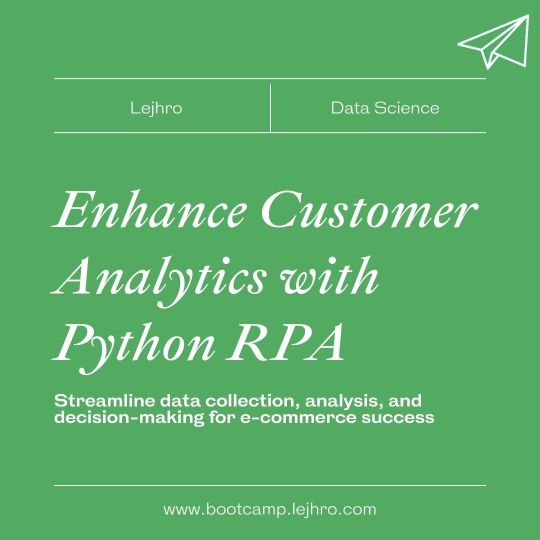
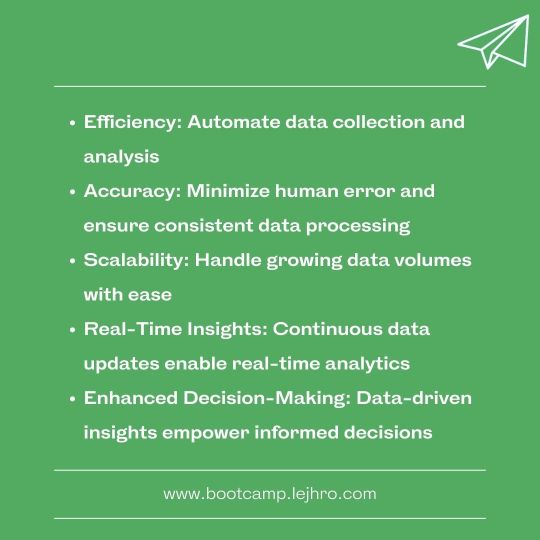
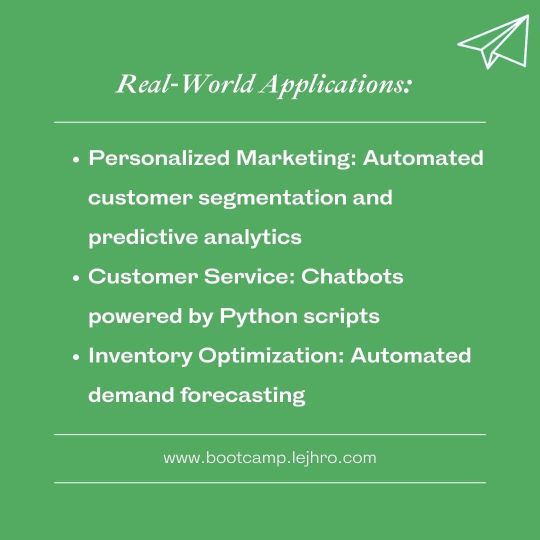

🚀 Boost Your E-commerce Game with Python RPA! 🚀
Enhance customer analytics with Python-based Robotic Process Automation (RPA) and stay ahead of the competition!
💥 Efficiency, accuracy, and scalability - what more could you ask for? 🤔
💥Learn More: www.bootcamp.lejhro.com/resources/python/improving-customer-analytics-in-e-commerce
💥The latest scoop, straight to your mailbox : http://surl.li/omuvuv
#Lejhro#LejhroBootcamp#Ecommerce#Python#RPA#CustomerAnalytics#BusinessGrowth#DigitalTransformation#DataScience#ArtificialIntelligence#MachineLearning#Automation#TechTrends#Innovation#MarketingTips#Ebusiness
2 notes
·
View notes
Text
Elevating Efficiency: AI-RPA Synergy!

The integration of Artificial Intelligence (AI) and Robotic Process Automation (RPA) has catalyzed a transformative shift in the landscape of business automation, leading to the emergence of Intelligent Automation (IA). As organizations increasingly seek innovative solutions to streamline operations, enhance efficiency, and deliver superior customer experiences, the synergy between AI and RPA has become instrumental in achieving these objectives. By combining the cognitive capabilities of AI with the rule-based automation of RPA, IA offers a powerful framework for automating complex processes, optimizing decision-making, and driving digital transformation across industries. This integration empowers businesses to leverage advanced technologies to augment human capabilities, unlock new levels of productivity, and foster a culture of continuous improvement.
Explore how AI and RPA can work together here!
2 notes
·
View notes
Text
Unlocking Efficiency and Innovation: The Role of Robotic Process Automation (RPA)
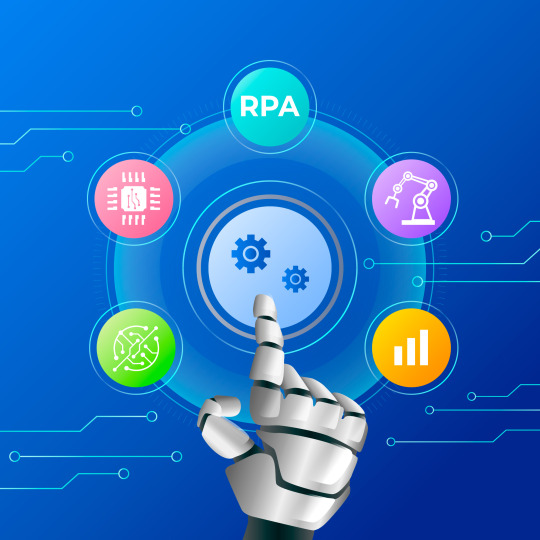
In today's fast-paced and competitive business environment, organizations are constantly seeking ways to improve efficiency, reduce costs, and increase productivity. Robotic Process Automation (RPA) has emerged as a powerful tool that can help businesses achieve these objectives.
What is Robotic Process Automation (RPA)?
Robotic Process Automation (RPA) is a technology that allows businesses to automate repetitive, rule-based tasks. It uses software robots, also known as "bots," to mimic human actions and interact with digital systems. These bots can log into applications, navigate through screens, input data, and complete tasks just like humans would.
The Role of RPA in Business:
RPA can be used to automate a wide range of tasks across various industries and departments. Here are some examples:
Finance and Accounting: Automating tasks such as accounts payable and receivable, invoice processing, and financial reporting.
Customer Service: Automating tasks such as answering FAQs, resolving customer inquiries, and processing orders.
Human Resources: Automating tasks such as onboarding new employees, processing payroll, and managing benefits.
IT: Automating tasks such as provisioning accounts, managing user access, and deploying software updates.
Impact of RPA on Businesses:
Implementing RPA can offer numerous benefits to businesses, including:
Increased efficiency and productivity: RPA can automate time-consuming and tedious tasks, freeing up employees to focus on more strategic and value-added activities.
Reduced costs: RPA can help businesses save money on labor costs, as well as reduce errors and compliance risks.
Improved accuracy and compliance: RPA bots are programmed to follow specific rules and procedures, which can help to improve accuracy and compliance with regulations.
Enhanced process visibility and control: RPA provides businesses with a clear view of their processes, which can help them identify and address bottlenecks.
Improved customer satisfaction: RPA can help businesses improve customer satisfaction by automating tasks such as order processing and customer service interactions.
RPA Services:
Implementing RPA successfully requires a partner with expertise in the technology and a deep understanding of business processes. A comprehensive RPA solution should include the following services:
Document AS-IS Process: This involves mapping out the existing process to identify areas for automation.
Design & Development of Bots, workflows, and forms for process automation: This includes designing and developing the software robots that will automate the tasks.
Bot license (We will use the appropriate underlying technology): This provides access to the software robots and the underlying technology platform.
Infrastructure: This includes setting up the necessary infrastructure to support the Robotic Process Automation (RPA) solution.
Production Deployment of the Bots: This involves deploying the bots to production and monitoring their performance.
RPA support: This includes ongoing support for the RPA solution, such as troubleshooting and maintenance.
Test & Deploy bots to production: This involves testing the bots in a production environment and making any necessary adjustments before they are deployed to full production.
Configuration data changes: This involves making changes to the configuration data of the bots as needed.
Password updates: This involves updating the passwords of the bots as needed.
Errors in executing the Bots: This involves resolving errors that occur during the execution of the bots.
Determining the “root cause” of a recurring issue or incident & recommendations: This involves identifying the root cause of a recurring issue or incident and recommending solutions to prevent it from happening again.
Infrastructure/application related issues: This involves resolving issues with the infrastructure or applications that the bots are interacting with.
Conclusion:
RPA is a powerful technology that can have a significant impact on businesses of all sizes. By automating repetitive tasks, RPA can help businesses improve efficiency, reduce costs, and increase productivity. However, it is important to choose a reputable Robotic Process Automation (RPA) companies with the expertise and experience to help you implement a successful RPA solution.
Ready to embrace the power of RPA?
Contact us today to learn more about how RPA can help your business achieve its goals.
#robotic process automation#robotic process automation rpa#rpa automation#robotic process automation software#rpa software#robotic process automation companies#robotic process automation technology#robotic process automation in healthcare#robotic process automation in banking#rpa solution#robotic process automation for finance#process automation solution#robotic process automation services#robotic process automation for insurance#rpa system#what is rpa automation#robotic process automation solution#robotic process automation benefits#robotic process automation consulting#robotic process automation consultant#rpa service provider#rpa consulting services
2 notes
·
View notes
Text
The Top Choice: Oracle Enterprise Resource Planning Cloud Service for Your Business Success
Are you searching for the best solution to streamline your business operations? Look no further than the Top Choice: Oracle Enterprise Resource Planning (ERP) Cloud Service. In today's fast-paced business world, organizations need a robust ERP solution to optimize their processes, enhance productivity, and drive growth. Oracle ERP Cloud Service, crowned as the best in the industry, offers a comprehensive suite of tools designed to meet the demands of modern businesses.
Why Choose the Best: Oracle Enterprise Resource Planning Cloud Service?
Oracle ERP Cloud Service stands out as the Best Option for businesses across various industries. Here's why:
Scalability: Easily scale your ERP system as your business grows, always ensuring seamless operations.
Integration: Integrate ERP with other Oracle Cloud services for a unified business platform.
Real-time Insights: Gain valuable insights into your business with real-time analytics, enabling data-driven decision-making.
Security: Rest easy knowing your data is secure with Oracle's advanced security features.
Frequently Asked Questions about the Best Choice: Oracle ERP Cloud Service
Q1: What modules are included in Oracle ERP Cloud Service?
A1: Oracle ERP Cloud Service includes modules for financial management, procurement, project management, supply chain management, and more. Each module is designed to optimize specific aspects of your business.
Q2: Is Oracle ERP Cloud Service suitable for small businesses?
A2: Yes, Oracle ERP Cloud Service is scalable and can be tailored to meet the needs of small, medium, and large businesses. It offers flexible solutions suitable for businesses of all sizes.
Q3: How does Oracle ERP Cloud Service enhance collaboration among teams?
A3: Oracle ERP Cloud Service provides collaborative tools that enable teams to work together seamlessly. Features like shared calendars, document management, and task tracking enhance communication and collaboration.
Conclusion: Empower Your Business with the Best ERP Solution
Oracle Enterprise Resource Planning Cloud Service is not just a choice; it's the Ultimate Solution for businesses seeking to optimize their operations. By harnessing the power of Oracle ERP, you can streamline processes, improve efficiency, and drive innovation. Don't let outdated systems hold your business back. Embrace the future with Oracle ERP Cloud Service and propel your business to new heights.
Ready to transform your business? Contact us today to explore the endless possibilities with the best ERP solution on the market.
#oracle#oracle erp#rapidflow#oracle erp cloud service#best erp solution#oracle erp service providers#business#business automation#oracle services#enterprise software#scalability#integration#rpa#market#erp
3 notes
·
View notes
Text
Healthcare Automation 2025: AI & Salesforce Shaping Patient Care
AI and Salesforce Health Cloud are reshaping patient care by streamlining workflows, reducing admin load, and enabling smarter clinical decisions. This shift is helping hospitals deliver faster and more connected care.
#Healthcare Automation#Salesforce Health Cloud#AI in Healthcare#Patient Care 2025#Healthcare CRM#Healthcare Innovation#GetOnCRM#GenAI in Healthcare#RPA in Healthcare#Healthcare Technology Trends
0 notes
Text
What if your team could eliminate 80% of its repetitive tasks, reduce operational errors by half, and run 24/7 without burnout? That’s not a dream. It’s Robotic Process Automation (RPA) — and it’s already transforming industries you rely on every day.
But here’s the catch:��most RPA tools fall short when applied to complex, compliance-heavy workflows. That’s where Robotan stands out — tailor-built for high-stakes sectors like fintech, stock broking, insurance, and logistics.
What Is RPA, Really?
RPA uses software “bots” to replicate human actions like clicking, copying, updating, and generating reports. Think of it as your digital workforce — handling boring, repetitive tasks at lightning speed and without error.
But modern RPA, especially when fused with AI, goes further. It understands processes, adapts in real-time, and integrates across tools like CRMs, ERPs, and legacy systems.
That’s not just automation. That’s transformation.
Where Robotan Changes the Game
While most RPA platforms focus on the tech layer, Robotan brings something rare: deep industry context. Their in-house automation engine doesn’t just automate tasks — it redesigns how operations work.
Here’s how Robotan is reshaping business across three key industries:
Logistics & Supply Chain: From Bottlenecks to Seamless Flow
📦 Before: Manual invoicing, delayed shipment updates, and missed tracking data.
⚙️ After Robotan:
End-to-end order-to-invoice automation
Real-time inventory sync
Automated shipment alerts and reconciliation
Zero human errors in rate calculations
Result? Faster deliveries, lower cost per shipment, and stress-free audits.
Stock Broking: Precision at the Speed of Markets
📉 Before: Disjointed data, trade settlement delays, and compliance headaches.
⚙️ After Robotan:
Real-time trade confirmations
Automated KYC and AML checks
T+1 settlement process support
AI-driven reconciliation workflows
Robotan’s bots ensure that regulatory requirements are met while keeping operations lightning-fast — crucial in this high-stakes space.
Insurance: Making Claims & Compliance Smarter
Before: Paper-heavy claims, manual KYC, and delayed policy renewals.
After Robotan
Automated claims intake & validation
eKYC integration across platforms
Instant policy renewals & auto-notifications
Clean compliance trail for audits
Insurance firms using Robotan report turnaround time improvements of over 60% — that’s customer loyalty in action.
Why Most RPA Tools Fail — and Robotan Doesn’t
Traditional RPA is like hiring a robot assistant with no context. It needs rules for everything and breaks when things change.
Robotan uses AI-infused bots and process mapping to deliver:
Adaptable workflows (not just scripts)
Seamless integration with legacy + modern systems
Scalable solutions across departments
Compliance built-in from day one
This means less maintenance, faster deployment, and real ROI.
Not Just Automation — A Competitive Edge
According to Deloitte, 74% of companies are exploring or using RPA. But only a fraction unlock true value — because they treat RPA like a patch, not a strategy.
With Robotan, businesses gain:
✅ 60–80% cost reduction in target processes ✅ 3x faster operational turnaround ✅ Near-zero manual error rates ✅ Teams free to innovate, not copy-paste
Real-World Impact in Weeks, Not Months
One fintech client automated onboarding + document verification with Robotan and saw:
92% time savings
85% reduction in support tickets
Full compliance, with fewer audits triggered
Ready to Automate Smarter?
If your business is still relying on humans to do what bots could handle better, you’re already behind.
🔹 Book a free workflow audit 🔹 See how Robotan plugs into your stack 🔹 Start seeing results in under 30 days
📞 Call us at +91 9820446093 or visit www.robotan.io
Robotan isn’t just automation — it’s your competitive advantage in a digital-first world. Now is the time to automate like your future depends on it. Because it does.
0 notes
Text

#Automation Solutions#Intelligent Automation#AI Solutions#Business#Centelli#RPA#Dubai#Digital Worker#Free Webinar
0 notes
Text
Key Benefits of RPA in the Manufacturing Industry

The manufacturing industry has always been a vanguard of innovation, from the steam engine to the assembly line. The challenge today is how to manage a fast-paced world driven by technology. Robotic Process Automation (RPA) is emerging as a key player in the modern manufacturing sector. The global RPA market, valued at approximately $3.2 billion in 2023, is projected to reach $26.5 billion by 2033, reflecting a robust compound annual growth rate (CAGR) of 23.5% over the next decade.
Traditional automation works on physical tasks, whereas RPA performs repetitive tasks in the digital world. This pertains to not only time management but also enhanced productivity and precision. Let’s learn more about how RPA can contribute to manufacturing industries and facilitate seamless processes.
Why is RPA Important for Manufacturing?
Manufacturing means doing more with less. With the increasing demand from customers, competition worldwide threatens to make manufacturers inefficient. RPA removes slowdowns and manual errors in areas like supply chain, compliance, and workforce operations. It is now possible for companies to automate processes, easily scale operations, and predict and respond to market shifts in ways that were never possible before.

Benefits of RPA Automation in Manufacturing
Enhanced Efficiency and Productivity
Industry players have tight deadlines and heavy workloads. One of the biggest benefits of RPA automation is constant task scheduling on production lines and inventory management system changes with no interruption or errors. That means work gets done more quickly so that employees have time to think about fresh ideas.
Cost Savings and Resource Optimization
Manufacturers face the continual challenge of reducing costs while maintaining quality. RPA saves operational expenses by automating mundane activities, including procurement and invoicing. Researchers find that manufacturers taking RPA can save nearly 30% of operational expenses, which paves the way for a long-term route to sustainability.
Improved Accuracy and Reduced Errors
Human errors in the manufacturing process can prove costly. RPA ensures that functions like quality control, compliance checking, and data management are carried out accurately. It can be beneficial to reduce waste by minimizing rework and double-checking shipped items.
Value of RPA for Decision-Making
RPA is powerful, as it is capable of real-time data collection, organization, and analysis in modern manufacturing. Manufacturers can take actionable insights tailored to their needs to optimize supply chains, foresee maintenance, and change their production schedules as required.
Uses of RPA in the Manufacturing Industry
Quality Control and Compliance
Manufacturing processes must comply with set standards. RPA conducts inspections, records the statistics, and generates reports to ensure that the product conforms to regulations and customer specifications.
Workforce implementation and payroll automation.
Naturally, coordinating and funding a streamlined and functional workforce is essential. RPA makes payroll, attendance, and appraisal processes easier. Automating these functions allows HR analysts to focus on primary tasks.
Predictive Maintenance and Monitoring
The combination of RPA and IoT sensors can be used by manufacturers to predict device failures in advance. RPA looks at the data, continuously alters the schedule, and ensures production lines run well.
Other Practical Uses of RPA in Manufacturing
RPA is also changing other practical uses in manufacturing, such as:
Inventory Management: Keeping track of your stock and ordering automatically.
Order Processing: Making the whole ordering chain from order receipt to delivery as simple as possible.
User Help: Giving live updates and instant responses.
Supply Chain Management: Coordinating suppliers, manufacturers, and distributors seamlessly.
XLNC Technologies’ Expertise in Manufacturing RPA
At XLNC Technologies, we are aware of the specific concerns surrounding the manufacturing sector. Our tailored RPA solutions are designed to address individual pain points, whether it’s optimizing quality control processes or enhancing supply chain efficiency. With a proven track record, we’re committed to helping manufacturers achieve operational excellence through automation.
Conclusion
The manufacturing sector is evolving, and the breakthroughs of RPA are fueling that evolution. RPA can make businesses more efficient and lower labor costs.
As you join forces with XLNC Technologies, you not only fuel the RPA automation of your manufacturing operation but also future-proof your plant engineering.
Contact us today to make your operations simpler and smarter.
FAQs
What are the benefits of RPA automation in manufacturing?
RPA is being applied to manufacturing companies to promote ROI, accuracy, and increased efficiency in routine tasks like data input and order fulfilment. It increases the productivity of the workforce and frees up employee time to think about more important tasks.
How does RPA add value to manufacturing processes?
RPA improves efficiency, reduces errors, and provides live data. It helps to make decisions, use resources wisely, and obey the industry rules.
What are the advantages of RPA for manufacturing employees?
RPA handles banal, repetitive work to allow employees to work smarter. When machines perform a repetitive job, employees get the opportunity to concentrate on mentally stimulating and creative tasks.
How is RPA used in the manufacturing industry?
RPA can be applied in many different areas, e.g., quality control, predictive maintenance, inventory restocking, payroll processing, and managing the supply chain. It contributes to the smooth running of a process.
How can XLNC Technologies help with RPA in manufacturing?
XLNC Technologies offers RPA solutions customised to manufacturing businesses’ unique needs. Through installation and ongoing support, they can assist manufacturers in automating, improving efficiency, and prospering long-term.
#RoboticProcessAutomation#RPA#ManufacturingInnovation#Industry40#SmartManufacturing#DigitalTransformation#Automation#ManufacturingEfficiency#SupplyChainAutomation#PredictiveMaintenance#QualityControl#ManufacturingTech#ProcessAutomation#WorkforceAutomation#XLNCTechnologies#FutureOfManufacturing#ManufacturingSolutions#OperationalExcellence#CostSavings#IndustrialAutomation#TechInManufacturing
0 notes
Text
BENEFITS OF RPA
Integration with BrowserStack and other online device farms
Based on stable and mature Java Platform
Runs on all Operating Systems, Browsers and Devices
No hardcoded data and no dependency on developers
Bots can be scheduled to run at periodic intervals
Runs on stand alone server or PC
Our development team works closely with Client
Process documentation, project plans, daily status sent regularly
1 note
·
View note
Text
Intelligent Automation with UiPath and ESS – Streamline Your Business
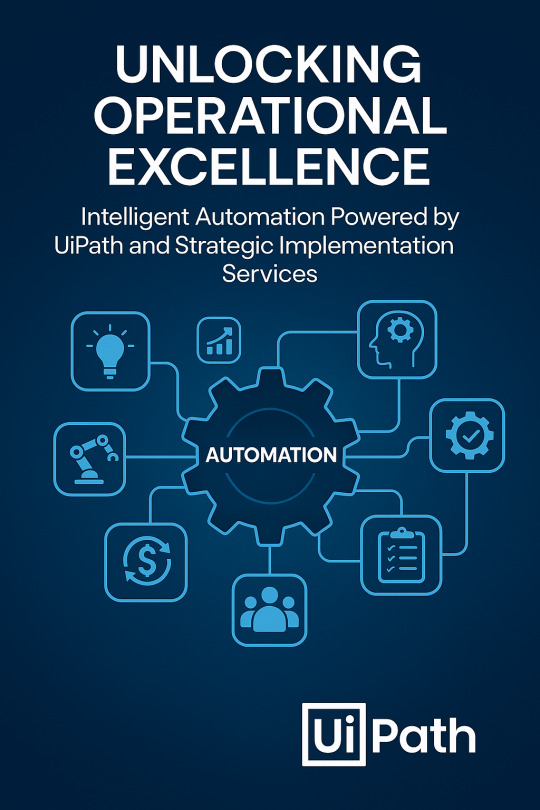
Discover how UiPath and Eastern Software Solutions (ESS) are transforming business operations through intelligent process automation. As a certified UiPath partner, ESS provides customized RPA services designed to automate repetitive tasks, enhance efficiency, and improve decision-making. By integrating UiPath's AI-powered tools with ESS's domain expertise, businesses benefit from faster processing, improved accuracy, and reduced operational costs. Whether it’s finance, HR, or supply chain, intelligent automation helps teams focus on high-value activities. Join the automation revolution with ESS and UiPath and empower your workforce to drive growth and productivity.
0 notes
Text

#Automation#ProcessAutomation#DigitalTransformation#Efficiency#AI#SmartWork#TechInnovation#RPA#BusinessAutomation#FutureOfWork
0 notes
Text
How AI Is Revolutionizing Contact Centers in 2025
As contact centers evolve from reactive customer service hubs to proactive experience engines, artificial intelligence (AI) has emerged as the cornerstone of this transformation. In 2025, modern contact center architectures are being redefined through AI-based technologies that streamline operations, enhance customer satisfaction, and drive measurable business outcomes.
This article takes a technical deep dive into the AI-powered components transforming contact centers—from natural language models and intelligent routing to real-time analytics and automation frameworks.
1. AI Architecture in Modern Contact Centers
At the core of today’s AI-based contact centers is a modular, cloud-native architecture. This typically consists of:
NLP and ASR engines (e.g., Google Dialogflow, AWS Lex, OpenAI Whisper)
Real-time data pipelines for event streaming (e.g., Apache Kafka, Amazon Kinesis)
Machine Learning Models for intent classification, sentiment analysis, and next-best-action
RPA (Robotic Process Automation) for back-office task automation
CDP/CRM Integration to access customer profiles and journey data
Omnichannel orchestration layer that ensures consistent CX across chat, voice, email, and social
These components are containerized (via Kubernetes) and deployed via CI/CD pipelines, enabling rapid iteration and scalability.
2. Conversational AI and Natural Language Understanding
The most visible face of AI in contact centers is the conversational interface—delivered via AI-powered voice bots and chatbots.
Key Technologies:
Automatic Speech Recognition (ASR): Converts spoken input to text in real time. Example: OpenAI Whisper, Deepgram, Google Cloud Speech-to-Text.
Natural Language Understanding (NLU): Determines intent and entities from user input. Typically fine-tuned BERT or LLaMA models power these layers.
Dialog Management: Manages context-aware conversations using finite state machines or transformer-based dialog engines.
Natural Language Generation (NLG): Generates dynamic responses based on context. GPT-based models (e.g., GPT-4) are increasingly embedded for open-ended interactions.
Architecture Snapshot:
plaintext
CopyEdit
Customer Input (Voice/Text)
↓
ASR Engine (if voice)
↓
NLU Engine → Intent Classification + Entity Recognition
↓
Dialog Manager → Context State
↓
NLG Engine → Response Generation
↓
Omnichannel Delivery Layer
These AI systems are often deployed on low-latency, edge-compute infrastructure to minimize delay and improve UX.
3. AI-Augmented Agent Assist
AI doesn’t only serve customers—it empowers human agents as well.
Features:
Real-Time Transcription: Streaming STT pipelines provide transcripts as the customer speaks.
Sentiment Analysis: Transformers and CNNs trained on customer service data flag negative sentiment or stress cues.
Contextual Suggestions: Based on historical data, ML models suggest actions or FAQ snippets.
Auto-Summarization: Post-call summaries are generated using abstractive summarization models (e.g., PEGASUS, BART).
Technical Workflow:
Voice input transcribed → parsed by NLP engine
Real-time context is compared with knowledge base (vector similarity via FAISS or Pinecone)
Agent UI receives predictive suggestions via API push
4. Intelligent Call Routing and Queuing
AI-based routing uses predictive analytics and reinforcement learning (RL) to dynamically assign incoming interactions.
Routing Criteria:
Customer intent + sentiment
Agent skill level and availability
Predicted handle time (via regression models)
Customer lifetime value (CLV)
Model Stack:
Intent Detection: Multi-label classifiers (e.g., fine-tuned RoBERTa)
Queue Prediction: Time-series forecasting (e.g., Prophet, LSTM)
RL-based Routing: Models trained via Q-learning or Proximal Policy Optimization (PPO) to optimize wait time vs. resolution rate
5. Knowledge Mining and Retrieval-Augmented Generation (RAG)
Large contact centers manage thousands of documents, SOPs, and product manuals. AI facilitates rapid knowledge access through:
Vector Embedding of documents (e.g., using OpenAI, Cohere, or Hugging Face models)
Retrieval-Augmented Generation (RAG): Combines dense retrieval with LLMs for grounded responses
Semantic Search: Replaces keyword-based search with intent-aware queries
This enables agents and bots to answer complex questions with dynamic, accurate information.
6. Customer Journey Analytics and Predictive Modeling
AI enables real-time customer journey mapping and predictive support.
Key ML Models:
Churn Prediction: Gradient Boosted Trees (XGBoost, LightGBM)
Propensity Modeling: Logistic regression and deep neural networks to predict upsell potential
Anomaly Detection: Autoencoders flag unusual user behavior or possible fraud
Streaming Frameworks:
Apache Kafka / Flink / Spark Streaming for ingesting and processing customer signals (page views, clicks, call events) in real time
These insights are visualized through BI dashboards or fed back into orchestration engines to trigger proactive interventions.
7. Automation & RPA Integration
Routine post-call processes like updating CRMs, issuing refunds, or sending emails are handled via AI + RPA integration.
Tools:
UiPath, Automation Anywhere, Microsoft Power Automate
Workflows triggered via APIs or event listeners (e.g., on call disposition)
AI models can determine intent, then trigger the appropriate bot to complete the action in backend systems (ERP, CRM, databases)
8. Security, Compliance, and Ethical AI
As AI handles more sensitive data, contact centers embed security at multiple levels:
Voice biometrics for authentication (e.g., Nuance, Pindrop)
PII Redaction via entity recognition models
Audit Trails of AI decisions for compliance (especially in finance/healthcare)
Bias Monitoring Pipelines to detect model drift or demographic skew
Data governance frameworks like ISO 27001, GDPR, and SOC 2 compliance are standard in enterprise AI deployments.
Final Thoughts
AI in 2025 has moved far beyond simple automation. It now orchestrates entire contact center ecosystems—powering conversational agents, augmenting human reps, automating back-office workflows, and delivering predictive intelligence in real time.
The technical stack is increasingly cloud-native, model-driven, and infused with real-time analytics. For engineering teams, the focus is now on building scalable, secure, and ethical AI infrastructures that deliver measurable impact across customer satisfaction, cost savings, and employee productivity.
As AI models continue to advance, contact centers will evolve into fully adaptive systems, capable of learning, optimizing, and personalizing in real time. The revolution is already here—and it's deeply technical.
#AI-based contact center#conversational AI in contact centers#natural language processing (NLP)#virtual agents for customer service#real-time sentiment analysis#AI agent assist tools#speech-to-text AI#AI-powered chatbots#contact center automation#AI in customer support#omnichannel AI solutions#AI for customer experience#predictive analytics contact center#retrieval-augmented generation (RAG)#voice biometrics security#AI-powered knowledge base#machine learning contact center#robotic process automation (RPA)#AI customer journey analytics
0 notes
Text
Unlocking Productivity with Robotic Process Automation
In an era where efficiency is critical, Robotic Process Automation (RPA) has emerged as a game-changer for businesses aiming to unlock new levels of productivity. RPA allows organizations to automate repetitive, rule-based tasks by deploying software bots that work around the clock with speed and precision. This not only accelerates processes but also reduces operational costs and minimizes human error.
By taking over tasks such as data extraction, report generation, invoice processing, and customer onboarding, Robotic Process Automation frees employees from mundane workloads. This enables teams to shift their focus to strategic, high-value activities like innovation, decision-making, and customer engagement. As a result, businesses experience higher output, improved accuracy, and faster service delivery.
One of RPA's strongest benefits is its ability to scale—bots can be quickly deployed across departments without requiring major changes to existing IT infrastructure. This makes implementation fast, cost-effective, and low-risk.
From finance and HR to supply chain and customer service, RPA is transforming how work gets done. Organizations that adopt RPA early are not just improving productivity—they’re gaining a competitive edge. Unlocking productivity with RPA isn't just about doing things faster—it's about working smarter and laying the foundation for digital transformation.
#robotic automation solution#software testing#automation testing#qa testing services#qa consulting services#test management tool#automated system testing#rpa test automation#end to end testing
0 notes
Text
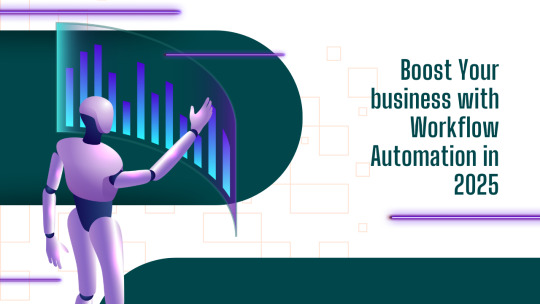
How Robotan Transforms Stock Broking
Robotan stands out not just as a tool for automation, but as a strategic enabler uniquely tailored to meet the needs of stock broking firms. It has been designed with deep industry insight, focusing on reducing operational complexity while enhancing productivity and compliance.
High-Volume Document Handling: Robotan’s platform is designed to adapt to changing business needs. It can be configured to handle new processes or workflows without the need for extensive code changes.
Scalable and Adaptive Workflows: Unlike rigid systems that require custom coding, Robotan’s no-hardcode approach allows firms to easily configure or scale their automation workflows as regulations or operational needs evolve. This ensures business continuity and future readiness.
Platform Compatibility and Integration: Robotan is engineered to work alongside existing stock broking platforms, CRM systems, and financial databases. It integrates seamlessly, meaning firms can adopt automation without needing to overhaul their current tech infrastructure.
Precision with Minimal Oversight: Achieving 100% data accuracy, Robotan minimizes the need for manual intervention, which is critical for functions like trade execution, reconciliation, and compliance reporting. This enhances both reliability and speed.
Always-On Operations: With the capability to run scheduled bots around the clock on standalone servers or PCs, Robotan ensures uninterrupted performance — even outside business hours. This empowers brokers to process trades, update records, and fulfill compliance checks anytime.
By focusing on real industry challenges such as volume surges, regulatory complexity, and operational efficiency, Robotan provides a comprehensive solution that evolves with your brokerage.
Trade Reconciliation: Automatically match trades with client accounts and flag discrepancies.
Regulatory Updates: Bots can track changes in financial regulations and update compliance checklists accordingly.
Client Communications: Automate sending trade confirmations, account statements, and alerts.
0 notes